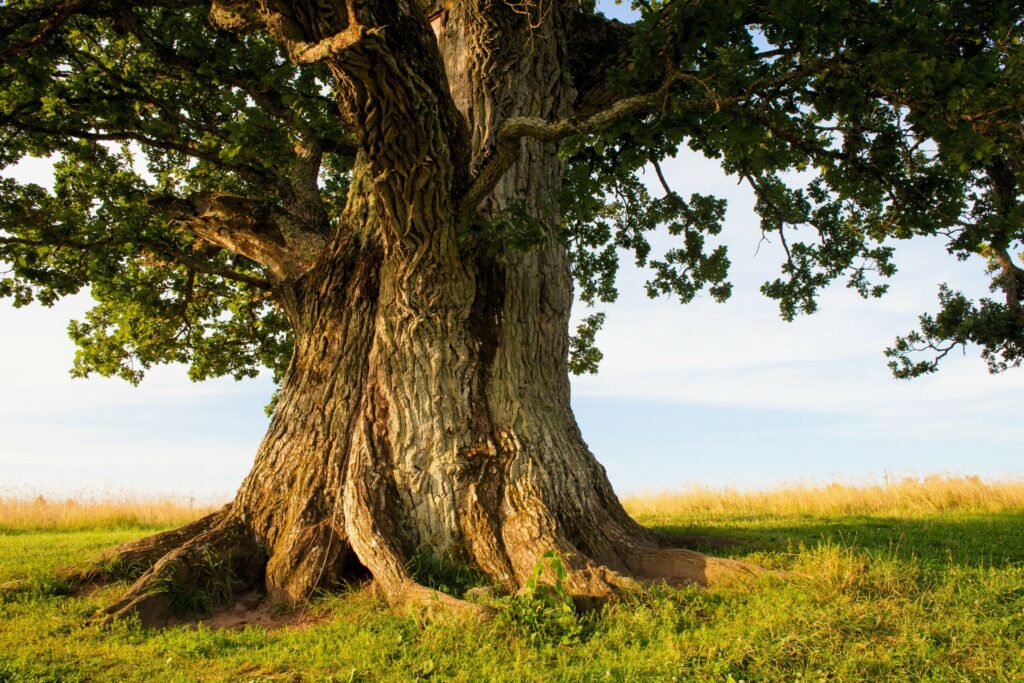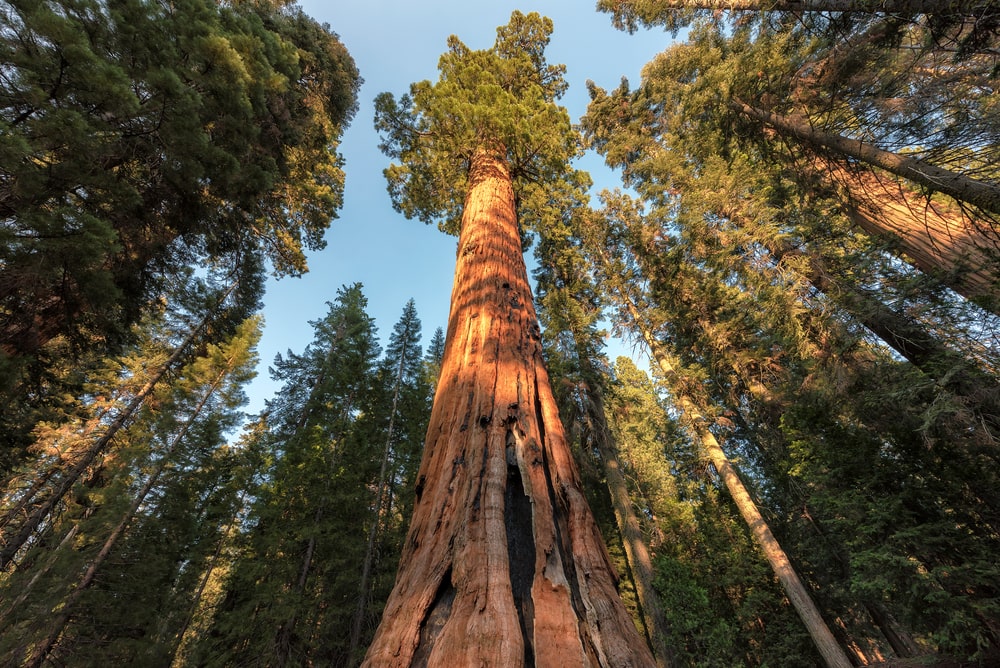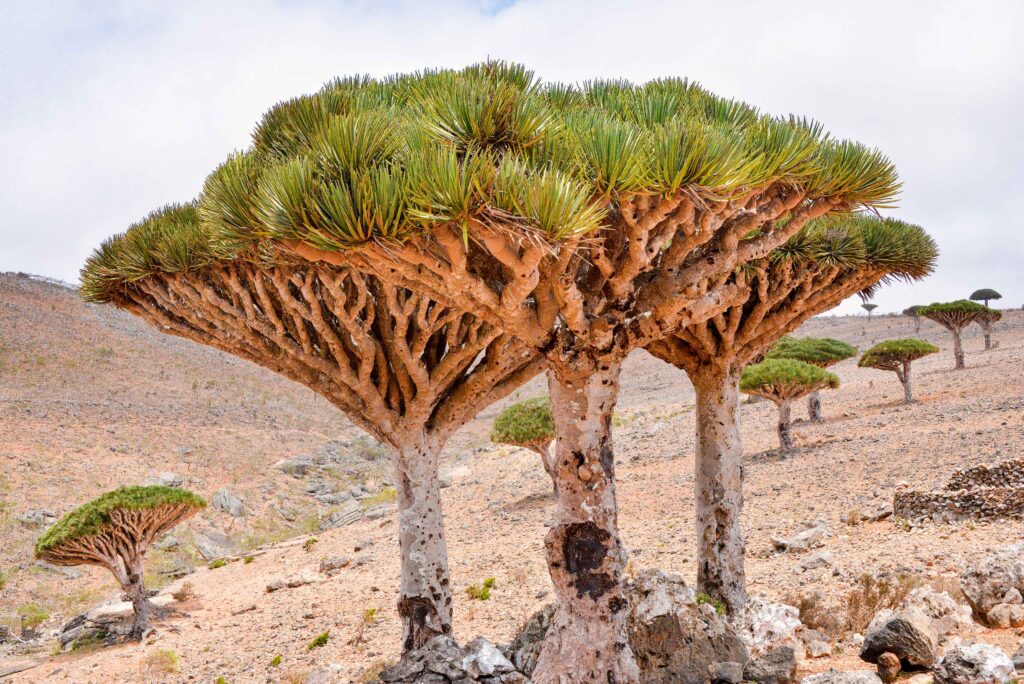The significance of ancient trees and their ecosystems
Introduction
Ancient trees, often referred to as veteran or heritage trees, are living remnants of historical eras, silently bearing witness to the passage of time. These majestic beings, which have stood for hundreds or even thousands of years, play a pivotal role in their ecosystems, offering a wide range of ecological, cultural, and environmental benefits. In many ways, they form the backbone of natural landscapes, supporting biodiversity, storing carbon, and influencing local climates. Moreover, their role in human history, as markers of time and places of spiritual significance, is equally compelling.
The Ecological Importance of Ancient Trees
1. Biodiversity Hotspots
Ancient trees act as keystone species within their ecosystems, fostering rich biodiversity. These trees, due to their age and sheer size, offer unique microhabitats that are rarely found in younger forests. Cavities in the trunks, hollows, deadwood, and loose bark provide shelter for various species, from birds and bats to insects, fungi, and microorganisms.
Ancient trees support a complex network of life forms, from the visible to the microscopic. For example, certain species of bats, such as the Bechstein’s bat (Myotis bechsteinii), are highly dependent on old-growth forests for roosting sites. In Europe, over 1,800 species of invertebrates rely on ancient oak trees alone. The deadwood that accumulates on or around ancient trees is critical for beetles, fungi, and other saproxylic organisms, which are vital to nutrient cycling within the ecosystem.
These trees also play a role in maintaining genetic diversity, particularly for species of plants and animals that rely on them. Since ancient trees grow in relatively stable conditions over long periods, they act as reservoirs of genetic material, allowing species to adapt and evolve to changing environments.

2. Carbon Sequestration and Climate Regulation
One of the most well-known ecological services provided by ancient trees is their ability to sequester carbon. Due to their size and longevity, these trees absorb large amounts of carbon dioxide from the atmosphere, storing it in their biomass (roots, trunk, branches, and leaves) and the surrounding soil. This process helps mitigate the effects of climate change by reducing the amount of carbon in the atmosphere.
While younger trees also sequester carbon, ancient trees are particularly effective at long-term carbon storage. A single mature tree can store hundreds of tons of carbon over its lifetime. Additionally, ancient trees contribute to local climate regulation by providing shade, cooling their surroundings, and releasing moisture into the air through a process known as transpiration.
In ecosystems such as rainforests and savannas, where ancient trees are prevalent, their presence helps stabilize temperatures and reduce the likelihood of extreme weather events. Their role in water cycles, particularly in regulating groundwater levels, further demonstrates their ecological significance.
3. Soil Health and Nutrient Cycling
The roots of ancient trees penetrate deep into the earth, anchoring the soil and preventing erosion. By stabilizing the soil, these trees protect ecosystems from degradation, especially in areas prone to heavy rainfall or drought. Their roots also enhance soil fertility by interacting with fungi and other microorganisms in the soil, forming complex symbiotic relationships that help in the absorption of essential nutrients.
The leaf litter, fallen branches, and decaying wood from ancient trees create nutrient-rich layers on the forest floor. This organic matter is broken down by decomposers, such as fungi, bacteria, and invertebrates, which release nutrients back into the soil. This nutrient cycling ensures the continued fertility of the land, allowing other plant species to thrive and maintain the overall health of the ecosystem.
Ancient Trees as Cultural and Historical Symbols
1. Spiritual Significance
Throughout history, ancient trees have held deep cultural and spiritual importance for various human societies. Many cultures across the globe revere trees as symbols of life, wisdom, and continuity. For example, the Yew tree (Taxus baccata) in the United Kingdom has been a symbol of longevity and resurrection in both pagan and Christian traditions. Sacred groves, often composed of ancient trees, have served as places of worship and reflection, connecting humans to the natural world and the divine.
In various indigenous cultures, ancient trees are considered to be the physical manifestations of ancestors or deities. In some parts of Africa, the baobab tree is seen as the “tree of life,” providing food, water, and shelter, while also serving as a spiritual symbol of endurance and healing. In Japan, ancient trees are often enshrined in Shinto practices, with some believed to house kami (spirits).
2. Historical Landmarks and Witnesses to Change
Ancient trees have witnessed centuries of human activity, wars, peace treaties, and environmental changes. As living monuments, they offer a tangible connection to the past. Some trees, like the Major Oak in Sherwood Forest, England, are linked to historical figures and legends. The Major Oak is reputed to be the hideout of Robin Hood and his band of outlaws, making it a symbol of resistance and rebellion.
In the United States, the Angel Oak in South Carolina, estimated to be over 400 years old, stands as a testament to both natural and human history, surviving hurricanes, fires, and human development. These trees often serve as local landmarks and symbols of resilience, reminding communities of the passage of time and the importance of preservation.
3. Cultural Ecosystem Services
The value of ancient trees extends beyond the tangible benefits they provide. These trees offer cultural ecosystem services, which include aesthetic enjoyment, inspiration for art and literature, and opportunities for recreation and tourism. Many ancient trees attract visitors from around the world, fostering a deeper appreciation for nature and encouraging conservation efforts.
In urban environments, ancient trees serve as oases of greenery, offering residents a sense of continuity and connection to nature amidst modern development. Urban parks featuring ancient trees provide important spaces for recreation, stress relief, and mental well-being, as studies have shown that exposure to natural environments can reduce anxiety and improve mood.

Threats to Ancient Trees and Their Ecosystems
Despite their significance, ancient trees and the ecosystems they support are under threat. Human activities, including deforestation, urbanization, and agricultural expansion, are leading to the loss of old-growth forests and the habitats they provide. Climate change poses another significant threat, as rising temperatures and shifting weather patterns can alter the ecosystems that ancient trees depend on, making it difficult for them to survive.
1. Deforestation and Habitat Fragmentation
The destruction of forests for timber, agriculture, and development is one of the greatest threats to ancient trees. Deforestation not only leads to the loss of individual trees but also disrupts the delicate balance of the ecosystems they support. Habitat fragmentation, where large areas of forest are broken up into smaller patches, isolates ancient trees from other parts of the ecosystem, making it harder for species that rely on them to survive.
In many parts of the world, ancient trees are cut down to make way for plantations, roads, and buildings, often without consideration for their ecological and cultural significance. This loss is particularly devastating in regions like the Amazon rainforest, where ancient trees form the foundation of one of the most biodiverse ecosystems on the planet.
2. Climate Change and Extreme Weather
As climate change accelerates, ancient trees face increasing stress from extreme weather events such as droughts, storms, and floods. These trees, which have thrived in stable environments for centuries, may not be able to adapt to rapid changes in temperature and moisture levels. Droughts can weaken trees, making them more susceptible to diseases and pests, while storms can cause physical damage to their structures.
In some regions, the range of species that depend on ancient trees is shifting due to changing temperatures. For example, certain bird species that once nested in ancient trees are now migrating to cooler areas, leaving these trees without the symbiotic relationships they once supported.
3. Invasive Species and Diseases
Invasive species and diseases pose another significant threat to ancient trees. In some cases, non-native species introduced to an area can outcompete native species for resources, leading to the decline of ecosystems. For instance, the introduction of the emerald ash borer (Agrilus planipennis), a beetle native to Asia, has devastated ash tree populations in North America, including many ancient specimens.
Diseases such as Dutch elm disease, chestnut blight, and sudden oak death have also decimated populations of ancient trees, reducing their numbers and affecting the ecosystems they support. The spread of these diseases is often accelerated by human activity, such as global trade and movement of infected plants.
Conservation of Ancient Trees and Their Ecosystems
Given the ecological, cultural, and historical importance of ancient trees, their conservation is critical. Various strategies are being implemented worldwide to protect these natural treasures and the ecosystems they support.
1. Protected Areas and Legal Frameworks
Many countries have established legal protections for ancient trees, designating them as heritage or veteran trees and safeguarding them from logging and development. In Europe, initiatives such as the “Ancient Tree Inventory” aim to identify and protect old-growth trees, raising awareness about their importance. Similarly, in the United States, some ancient trees are protected under the National Register of Historic Places.
Protected areas, such as national parks and nature reserves, play a key role in the conservation of ancient trees. By preserving large tracts of forest, these areas provide a refuge for ancient trees and the species that depend on them, ensuring that their ecosystems remain intact.
2. Restoration and Reforestation Efforts
In addition to protecting existing ancient trees, restoration and reforestation efforts aim to create conditions for new generations of ancient trees to thrive. These initiatives often involve planting native species in areas that have been degraded by human activity, restoring the natural balance of the ecosystem.
Rewilding projects, which seek to restore ecosystems to their natural state, also play a role in the conservation of ancient trees. By reintroducing species that were once native to an area, such as large herbivores or predators, these projects help recreate the conditions that allowed ancient trees to thrive in the past.
3. Public Awareness and Education
Raising public awareness about the importance of ancient trees is essential for their conservation. Educational programs, community initiatives, and eco-tourism can foster a deeper appreciation for these trees and the ecosystems they support. By involving local communities in conservation efforts, these initiatives help ensure that ancient trees are protected for future generations.
In urban areas, campaigns to protect ancient trees from development can help preserve the natural heritage of cities and provide green spaces for residents to enjoy. These efforts often involve collaboration between government agencies, environmental organizations, and local communities.

Conclusion
Ancient trees and their ecosystems represent some of the most valuable and irreplaceable components of the natural world. They serve as biodiversity hotspots, climate regulators, and symbols of cultural and historical continuity. However, these trees are increasingly under threat from human activities and environmental changes. Conserving ancient trees requires a multifaceted approach, combining legal protections, restoration efforts, and public education to ensure their survival for future generations. By recognizing the significance of ancient trees, we can take meaningful steps to protect them and the ecosystems they support, preserving both natural and cultural heritage for centuries to come.